Berlin-Ichthyosaur State Park
Spring 2023
Two parks found in one gorgeously remote setting.
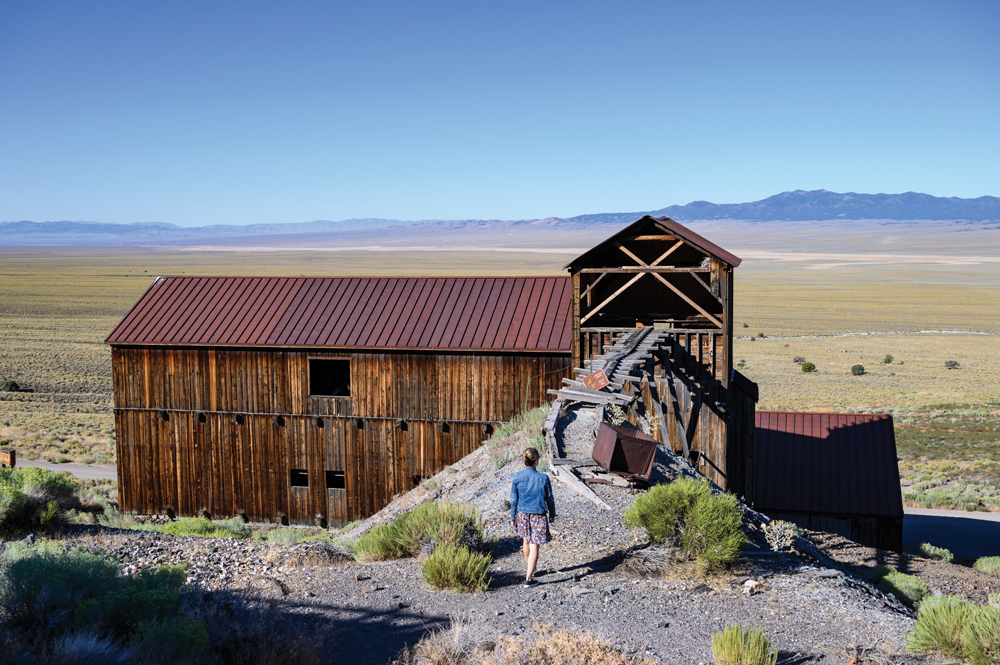
Nye County is a big place. If it were a state, it would be the 42nd largest—twice the size of Massachusetts. In addition to wide-open ranges and countless miles of dirt road, this slice of the American West is home to one of the state’s most remote and scenic attractions: Berlin-Ichthyosaur State Park.

GHOSTLY REMAINS
As you rattle up the road to the entrance, take in 60-mile views of the sweeping Ione (EYE-own) Valley. Up ahead, the 160-year-old ghost town of Berlin hugs the western slope of the breathtaking Shoshone Mountains. Even from a distance, the town strikes an impressive presence. A dozen structures stand in roughly the same condition as when built: their remarkable preservation possible due to the region’s dry climate, isolation, and state park designation since 1957.
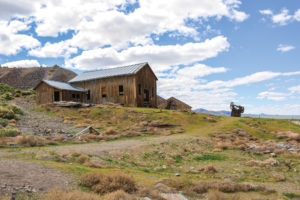
The townsite dates to 1863 when gold was discovered in the foothills. Within a few decades, the valley was home to a few mining villages, including nearby Ione, which still has a handful of residents and is worth a short detour to snap photos of its well-preserved structures.
One of Berlin’s best draws is the freedom to wander at one’s own leisure. Sure, rangers stand by ready to enthrall you in the area’s history, but visitors are welcome to meander trails or walk right up to any homestead and peer into a period-furnished living room.
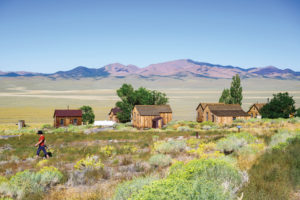
Whether exploring the old cemetery or staring down the entrance of the old mine, you’ll have plenty of opportunities to read stories of the intrepid folks who called this remote community home.

FOSSIL HOUSE
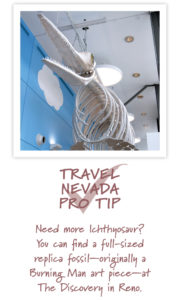 While the park is a proud steward of Berlin, it was originally established to protect the largest collection of ichthyosaur fossils in North America. So, after getting your fill of the town, it’s time to take a short ride back to approximately 225 million years ago.
While the park is a proud steward of Berlin, it was originally established to protect the largest collection of ichthyosaur fossils in North America. So, after getting your fill of the town, it’s time to take a short ride back to approximately 225 million years ago.
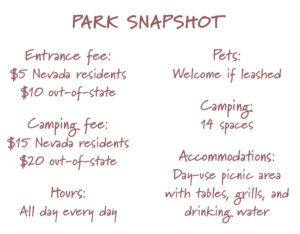 In 1928, a paleontologist from Stanford University discovered fossils jutting out of an eroded hilltop outside Berlin. Excavations began in 1954, and over the next decade, nearly 40 ichthyosaurs we unearthed.
In 1928, a paleontologist from Stanford University discovered fossils jutting out of an eroded hilltop outside Berlin. Excavations began in 1954, and over the next decade, nearly 40 ichthyosaurs we unearthed.
You’ll find most of the remains in the Fossil House, which preserves and displays the archeological dig site. Why so many in one location? No one is entirely sure, but the effects of toxic algae or getting stranded at low tide are possibilities. One thing is certain: all the creatures perished at the same time.
Visitors should call ahead to schedule their 30-minute Fossil House Tour. When tours aren’t running, a large viewing window gives visitors a glimpse of the site.

